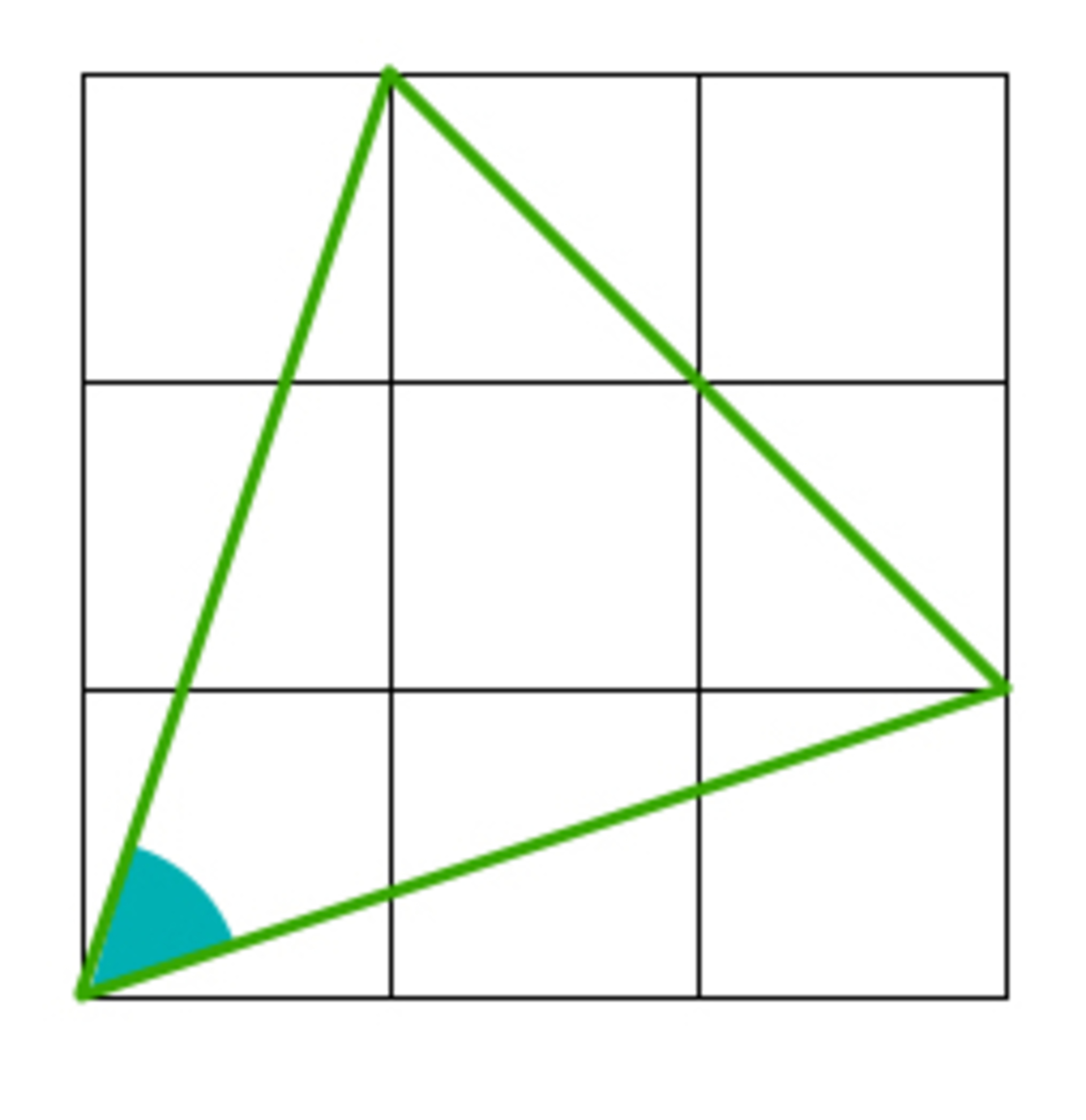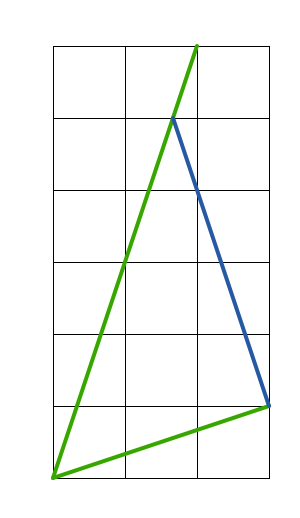A geometry problem by Chung Kevin

What is the blue angle?
This section requires Javascript.
You are seeing this because something didn't load right. We suggest you, (a) try
refreshing the page, (b) enabling javascript if it is disabled on your browser and,
finally, (c)
loading the
non-javascript version of this page
. We're sorry about the hassle.
2 solutions
Ah, you found my old problem. I expected people to use trigonometry to solve this problem.
There's actually a nice way to see the angle is part of a 3 − 4 − 5 triangle, with everything tilted at a 1 : 3 ratio.

The special property of the green lines is that they are slanted "1 square for every 3 squares". This suggests that we could use a different coordinate axis system to try and get a better sense of the angle.
From the lower green line, we create the coordinate axis by drawing the blue line at a slope of "1 square for every 3 squares". This will intersect the upper green line again. By doing a bit of algebra, we can see that they intersect at ( 3 5 , 5 ) in the old coordinate axis.
From here, by counting the number of squares, we can see that we get a 3 − 4 − 5 triangle, and hence the angle is tan − 1 3 4 .
Let the measure of the blue angle be θ . Then we note that tan 2 θ = 2 1 . Therefore, tan θ = 1 − ( 2 1 ) 2 2 × 2 1 = 3 4 and θ = tan − 1 3 4 .